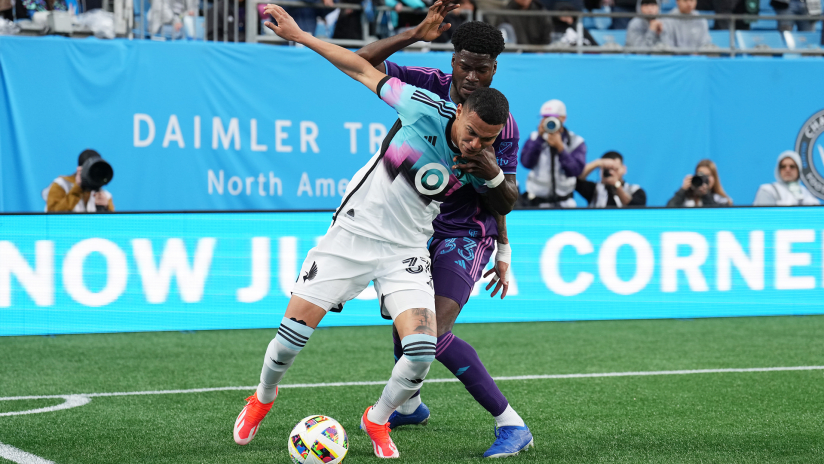Minnesota United was on fire last weekend, but they looked a little different than what we’re used to. Robin Lod and Devin Padelford both earned TOTM honors for their respective performances, and while they and their teammates looked every part the dominant team on Sunday, it was Head Coach Eric Ramsay’s adjustments to the lineup that caught my attention.
Call it a 4-3-3 if you’d like, but Sunday’s lineup operated much differently than you’d expect that kind of formation to function. I don’t want to give any secrets away, but I’m too excited about this change to not talk a little more about it. I’m a sucker for a good tactical plan, and though I’m no expert, I’d like to share the insightful observations of a humble writer.
Made in the Midfield
As with any formation, the thrust of the game plan came from the play of the Loons’ midfield. Establishing yourself in the middle of the park is critical to competing in any match, but there’s more than one way to cook an egg. A three-man midfield usually divides duties between a 6, an 8, and a 10, though that isn’t always the case.
When you get creative with your midfielders, one of two things can happen. Either they know what is being asked of them and they bring another level of flexibility and freedom to the pitch, or a lack of defined roles causes complete chaos, leaving your side vulnerable through the middle. The former was true for the Loons this weekend, and it was beautiful.
We were treated to a new midfield three against Charlotte, as Wil Trapp, Hassani Dotson, and Kervin Arriaga formed a unique, unexpected trio. With no clear playmaker in the group, fans were likely confused by this decision, but the roles were cleared up mere minutes after kickoff, as Arriaga dropped deep to essentially play as a defender.
The Honduran international was tasked with giving the Loons an extra man in the back, filling in where he was needed, and allowing the fullbacks to get involved higher up the pitch. But freeing up the fullbacks doesn’t help if there isn’t any room to maneuver, a problem that was likewise solved by the midfield setup.
With Arriaga in a recessed role, Trapp and Dotson played more like a pair of 8’s in a two-man midfield. This in turn left space between the midfield and striker Tani Oluwaseyi, where a number 10 would normally be. Instead of a single attacking mid, Robin Lod and Franco Fragapane were used as wide attacking mids, moving side-to-side across the pitch to provide their unique creative sparks and leave space out wide for the oncoming fullbacks.
The final piece of the puzzle was the inclusion of Oluwaseyi in the starting lineup, whose profile and playstyle differ from that of Teemu Pukki enough to make this system work like a charm. The young striker was constantly on the shoulder of Charlotte’s backline, stretching the opposition and offering his teammates the option to play him in on goal at all times. Without his ability to leave space for Fraga and Lod to slide behind him, MNUFC’s free-flowing formation wouldn’t have looked so fluid.
They’re Just Numbers
The starting XI was listed as a 4-3-3, but you could rearrange it in a number of ways and still technically be correct. At times, it was a 5-4-1; other times, it was more of a 4-5-1. No matter how you decide to define it or slice it up, formations are ultimately just frameworks to build from. Teams that hold to a rigid shape can find success, but in a game as fluid as soccer, it’s the teams that find a way to flex their shape that tend to dominate.
To a man, Saturday’s lineup was a perfect example of making your game plan fit your personnel. While some coaches try to mold a team around their own rigid ideas, the best coaches find a way to get the best out of the players available while implementing the principles they believe in at the same time. Coach Ramsay demonstrated his ability to do just that on Sunday, showing confidence in decision-making beyond his years.
What does this mean for us moving forward? Well, it would be great to see Sunday’s game plan continue, but there’s no reason to stick to one formation or lineup. Tactics are largely dictated by available personnel from week-to-week, and as long as everyone is on the same page regarding the guiding principles of play, we should expect to see further flexibility as needed for the rest of the season. Suffice it to say, you should keep an eye on the X’s and O’s this year; I have a feeling we’re going to learn a lot.




